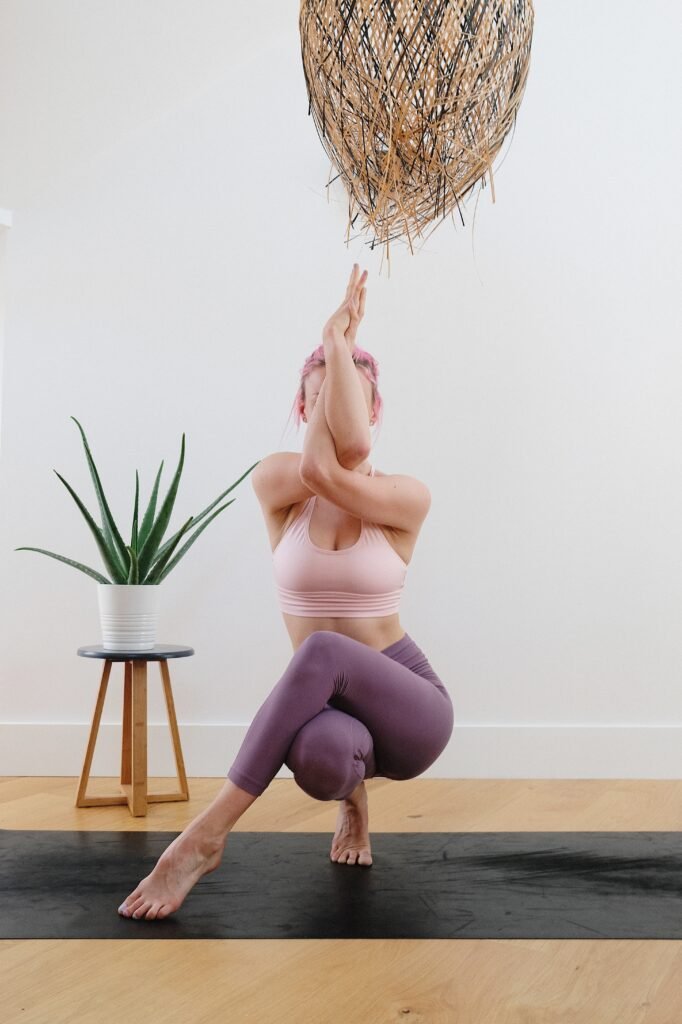Are you curious about the practice of breathwork and its role in alternative medicine? If so, you’re in the right place! In this article, we’ll explore the fascinating world of breathwork, uncovering its various techniques and the ways it is utilized in the realm of alternative medicine. Get ready to embark on a journey of self-discovery and learn how harnessing the power of your breath can enhance your well-being and transform your life. So sit back, take a deep breath, and let’s begin exploring the art of breathwork together!

Definition of Breathwork
Understanding the concept
Breathwork is a practice that focuses on conscious control of breath to improve physical, mental, and emotional well-being. It involves various techniques and exercises aimed at optimizing the way we breathe, ultimately benefiting our overall health. By utilizing specific breathing patterns and rhythms, breathwork practitioners aim to promote relaxation, reduce stress, increase energy levels, and even facilitate emotional release.
Different types and techniques
There are numerous types and techniques of breathwork, each with its own unique approach and purpose. Some common practices include diaphragmatic breathing, box breathing, alternate nostril breathing, and holotropic breathwork. Diaphragmatic breathing, also known as deep belly breathing, involves engaging the diaphragm to enhance the breath’s depth and effectiveness. Box breathing, on the other hand, focuses on equalizing the lengths of inhalation, holding the breath, and exhalation, creating a balanced rhythm. Alternate nostril breathing involves alternating the flow of breath between the left and right nostrils, creating a sense of balance and harmony within the body. Holotropic breathwork, pioneered by Dr. Stanislav Grof, is a transformative practice that utilizes accelerated breathing to access altered states of consciousness and promote self-exploration.
History of Breathwork
Ancient traditions
The use of breathwork can be traced back to ancient civilizations, where it was an integral part of spiritual and meditative practices. These ancient traditions recognized the power of breath as a gateway to higher consciousness and self-healing. In India, Pranayama is a yogic practice that involves breath control and manipulation to balance the body’s energy and rejuvenate the mind. In Traditional Chinese Medicine, Qi Gong incorporates specific breathing techniques to cultivate life force energy and balance energy flow within the body.
Integration into alternative medicine
Breathwork started gaining recognition in the Western world during the 20th century as part of the evolving field of alternative medicine. It was embraced by practitioners who sought to explore holistic approaches to health and well-being. Breathwork became a key component in modalities such as mindfulness-based stress reduction, psychotherapy, and energy healing. Today, it is widely embraced as a valuable tool for personal growth, self-discovery, and holistic healing.
Benefits of Breathwork
Physical health benefits
Breathwork offers numerous physical health benefits. When practiced regularly, it helps improve lung capacity, enhances respiratory efficiency, and oxygenates the body more effectively. Proper breathing techniques can also reduce blood pressure, promote cardiovascular health, and boost immune function. Additionally, breathwork facilitates relaxation, which in turn reduces muscle tension, alleviates pain, and improves overall well-being.
Mental and emotional benefits
Beyond physical health, breathwork has profound effects on mental and emotional well-being. By consciously regulating the breath, we can calm the mind, reduce anxiety, and improve focus and concentration. Breathwork practices also encourage introspection, self-awareness, and mindfulness, helping individuals cultivate a sense of inner peace and emotional balance. It can be a powerful tool for managing stress, promoting emotional resilience, and enhancing overall mental health.
Stress reduction and relaxation
One of the most significant benefits of breathwork is its ability to reduce stress and induce relaxation. Deep, intentional breathing triggers the body’s relaxation response, lowering cortisol levels and activating the parasympathetic nervous system. These physiological changes promote a state of calm, helping to reduce anxiety, alleviate insomnia, and improve overall sleep quality. Incorporating breathwork into daily routines can significantly contribute to stress management and a greater sense of well-being.
Breathing Techniques in Breathwork
Diaphragmatic breathing
Diaphragmatic breathing, also known as belly breathing or deep breathing, is a fundamental technique in breathwork. It involves consciously engaging the diaphragm muscle to expand the lungs fully. When practicing diaphragmatic breathing, you inhale deeply through the nose, allowing the abdomen to rise and expand, and then exhale fully, allowing the abdomen to fall. This technique encourages a slow and controlled breath, activating the body’s relaxation response and promoting a sense of calm.
Box breathing
Box breathing is a technique that focuses on creating a balanced and rhythmic breath pattern. It involves inhaling, holding the breath, exhaling, and holding the breath again, each for an equal count of seconds. Imagine tracing the shape of a square as you follow this breath pattern. Box breathing helps regulate the nervous system, promotes mental clarity, and cultivates a sense of inner balance and tranquility.
Alternate nostril breathing
Alternate nostril breathing, also known as Nadi Shodhana in yogic traditions, involves alternating the flow of breath between the left and right nostrils. This technique is believed to balance the left and right hemispheres of the brain and harmonize the body’s energy. To practice alternate nostril breathing, you use your thumb and ring finger to alternately close one nostril while inhaling and exhaling through the other. This breathwork practice facilitates balance, clarity, and a deeper connection between mind and body.
Holotropic breathwork
Holotropic breathwork, developed by Dr. Stanislav Grof, is an intense and transformative practice that utilizes accelerated and deep breathing to access altered states of consciousness. This technique can evoke powerful emotional experiences, facilitate psychological healing, and provide a gateway to deep self-exploration. Holotropic breathwork often takes place in a supportive group setting, where practitioners are guided to explore their inner landscapes and gain insights into their personal journey.

Breathwork and Meditation
Complementary practices
Breathwork and meditation are complementary practices that share a common goal of cultivating presence and enhancing self-awareness. While meditation involves stilling the mind and observing thoughts without judgment, breathwork uses conscious breathing techniques to anchor attention and facilitate a heightened state of awareness. Together, these practices can deepen the meditative experience, intensify focus, and promote a sense of calm and clarity.
Similarities and differences
The primary similarity between breathwork and meditation lies in their ability to regulate the breath and cultivate mindfulness. Both practices encourage a nonjudgmental attitude and aim to quiet the mental chatter, allowing individuals to connect with the present moment. However, breathwork places a more explicit emphasis on the breath as a focal point, utilizing specific techniques and rhythms to access different states of consciousness. Meditation, on the other hand, encompasses a broader range of techniques, including breath observation, body scanning, and guided visualization.
Role of Breathwork in Energy Healing
Breath and energy connection
Breathwork plays a significant role in energy healing modalities as it serves as a bridge between the physical and energetic bodies. Our breath carries prana, or life force energy, throughout our entire being. By consciously directing and manipulating the breath, we can influence the flow of energy within our body and promote balance and harmony. Breathwork is often used to activate and clear the body’s energy centers, known as chakras, facilitating physical, emotional, and spiritual healing.
Chakra cleansing and balancing
Chakras are energetic centers located throughout the body, and they are associated with specific qualities and aspects of our being. Breathwork can be used as a means to cleanse and balance the chakras, ensuring the smooth flow of energy within the body. Different breathing techniques can be applied to each chakra, focusing on clearing any energetic blockages and promoting alignment. By working with the breath in this way, individuals can experience a greater sense of vitality, well-being, and spiritual connection.

Breathwork for Emotional Release
Connecting with suppressed emotions
Emotions have a profound impact on our overall well-being. However, we often suppress or repress certain emotions, leading to energetic blockages and imbalances. Breathwork offers a safe space for individuals to connect with and release these suppressed emotions. By engaging in deep and intentional breathing, we create a container for emotional exploration and expression. The breath serves as a catalyst for releasing pent-up emotions, allowing individuals to process and integrate their feelings in a supportive and transformative way.
Techniques for releasing emotional blockages
Breathwork provides various techniques for releasing emotional blockages and promoting emotional healing. One such technique is cathartic breathwork, where individuals are encouraged to release emotions through intense and forceful breathing. This allows for the discharge of stored emotions and the release of emotional tension. Another technique is integrative breathwork, which focuses on creating a gentle and sustained breath to access deeper emotional states and promote integration and healing. By utilizing these techniques, individuals can experience emotional release, healing, and a greater sense of emotional well-being.
Scientific Research on Breathwork
Studies and evidence
Although breathwork has been practiced for centuries, scientific research on its efficacy is still emerging. However, preliminary studies suggest promising results. A study published in the Journal of Alternative and Complementary Medicine found that slow breathing exercises improved heart rate variability, indicating increased parasympathetic activity and reduced stress. Another study published in the International Journal of Yoga Therapies found that breathwork was effective in reducing symptoms of anxiety and improving overall mental well-being. While further research is warranted, these studies provide valuable insights into the potential benefits of breathwork.
Physiological effects on the body
Breathwork has been shown to have profound physiological effects on the body. Controlled breathing techniques can lower blood pressure, reduce heart rate, and enhance the body’s ability to tolerate stress. Breathwork has also been found to improve lung function, increase oxygen saturation, and support optimal respiratory health. Additionally, breathwork activates the body’s relaxation response, promoting relaxation, reducing muscle tension, and improving sleep quality. These physiological changes contribute to overall well-being and can have a positive impact on many aspects of health.

Professional Breathwork Practitioners
Training and certifications
For those interested in exploring breathwork, working with a qualified breathwork practitioner is essential. Professional breathwork practitioners undergo rigorous training and certification to ensure they can facilitate sessions safely and effectively. Training programs and certifications vary, but they often cover topics such as breathwork techniques, facilitation skills, ethics, and practitioner-client dynamics. It is crucial to choose a practitioner who has received thorough training and holds a recognized certification to ensure the highest standards of practice.
Finding a qualified practitioner
To find a qualified breathwork practitioner, you can start by researching reputable breathwork organizations or associations that provide directories of certified practitioners. These directories often include information about practitioners’ training, experience, and areas of specialization. Referrals from friends, family, or other healthcare professionals can also be valuable in finding a qualified practitioner. It is important to reach out to potential practitioners, ask questions, and ensure their expertise aligns with your needs and goals before engaging in sessions.
Safety and Precautions in Breathwork
Potential risks
While breathwork is generally safe and beneficial, it is essential to approach the practice with caution and adhere to certain precautions. Some individuals may experience dizziness, lightheadedness, or hyperventilation when practicing certain breathwork techniques. Individuals with underlying medical conditions, such as asthma or cardiovascular conditions, should consult with their healthcare provider before engaging in breathwork practices. Additionally, it is important to practice breathwork in a safe and comfortable environment, allowing sufficient time for integration and grounding after more intense breathwork sessions.
Guidelines for safe practice
To ensure safe and effective breathwork practice, consider the following guidelines:
-
Start gradually: Begin with shorter sessions and gradually increase the duration and intensity of your breathwork practice.
-
Listen to your body: Pay attention to any discomfort or signs of strain during breathwork sessions. If you feel lightheaded or dizzy, slow down your breathing or return to normal breathing.
-
Practice in a safe environment: Find a quiet and comfortable space where you feel secure and free from distractions. Ensure proper ventilation and temperature control to enhance relaxation and comfort.
-
Seek guidance: If you are new to breathwork or exploring more advanced techniques, consider working with a qualified breathwork practitioner who can provide guidance, support, and ensure your safety throughout the process.
Remember, breathwork is a personal practice, and everyone’s experience may differ. It is essential to honor your unique needs and limitations and approach breathwork with an open mind and a willingness to explore and grow.
In conclusion, breathwork is a powerful practice with a rich history and numerous benefits. By understanding the concept of breathwork, exploring its various techniques, and recognizing its role in alternative medicine, we can harness the transformative potential of the breath. Whether seeking physical health benefits, emotional release, or spiritual connection, breathwork offers a versatile and holistic approach to well-being. With proper guidance, an open mind, and a commitment to safe practice, you can embark on a breathwork journey that can enhance your overall quality of life. So take a deep breath, embrace the power of the breath, and embark on a path of self-discovery and personal growth through breathwork.



